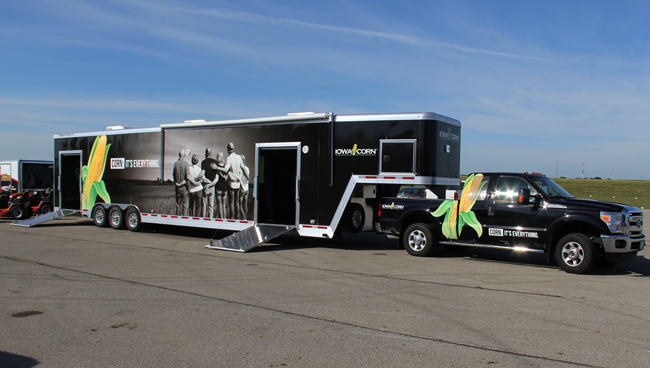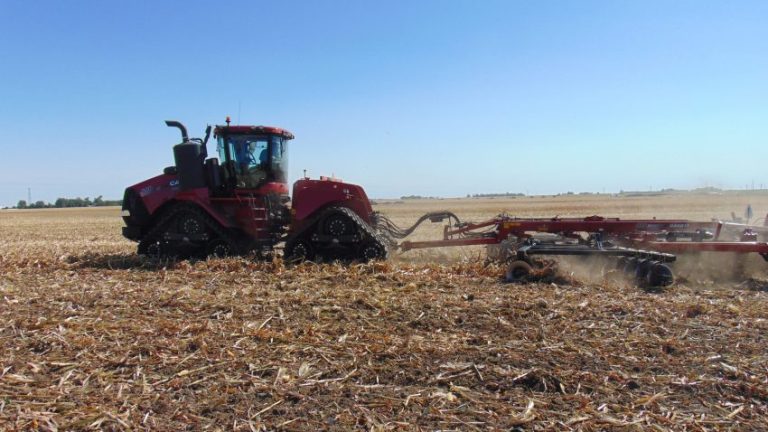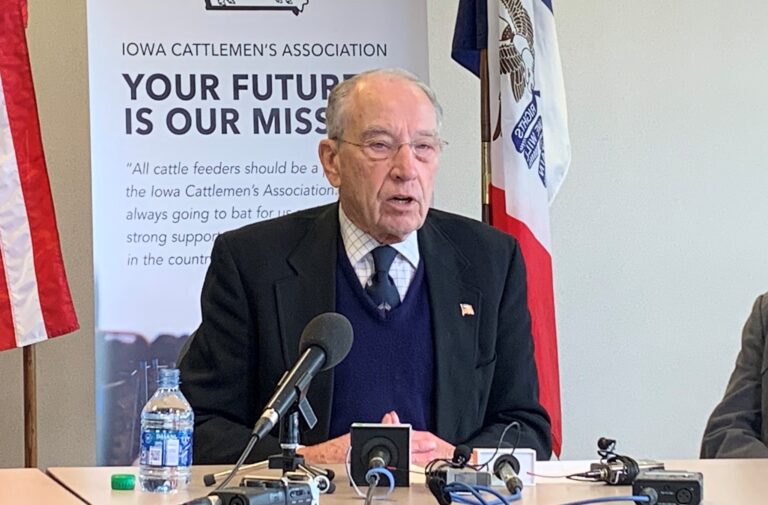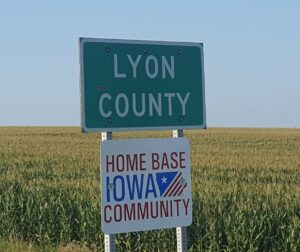Statewide Iowa — It’s been a difficult year for farmers—the planting season saw an overabundance of rain and delayed planting, the United States’ trade war with China persisted, skewing both commodity prices and demand, and farm bankruptcies rose to the highest level since 2011. However, favorable interest rates, strong yields, and limited land supply combined to help drive Iowa’s farmland values up for only the second time in six years.
The statewide value of an acre of farmland is now estimated to be $7,432, which represents an increase of 2.3 percent, or $168, since 2018. The $7,432 per acre estimate, and 2.3 percent increase in value, represents a statewide average of low-, medium-, and high-quality farmland.
“The reprieve in the land market, unfortunately, is not driven by a much stronger farm economy,” said Wendong Zhang. Zhang is an assistant professor of economics at Iowa State University and is responsible for leading the annual Iowa Land Value Survey. “This recent modest increase in land values reflects a lower interest rate environment and slowly improving U.S. farm income. However, we are still faced with significant uncertainty, especially the ongoing U.S.-China trade war, which has significantly affected U.S. agricultural exports, especially soybean exports, and lead to lower commodity prices and weaker farm income,” Zhang said. Stronger than expected crop yields in Iowa, and continuing limited land supply helped contribute to the increase in land values, despite low commodity prices.
While the growth in land values is a positive, Zhang warned that it should not be labeled as a “solid rebound” of the land market. “The Market Facilitation Program payments helped soften the blow and stabilize farm income and the land market; however, a no-deal or further escalation of the U.S.-China trade war on Dec. 15 will further amplify trade uncertainties and put downward pressure on farm income and land values,” Zhang said. “The future of farmland market still hinges on the pace and speed of Federal Reserve moves on interest rates, progress in the trade talks, and the availability of land parcels.”
The United States also saw 580 farm bankruptcies in 2019, the highest number since 2011. However, Zhang said that the overall share of bankrupt farms is still low, “but there are more farms under financial stress due to continued low commodity prices.”
Zhang said the growth in Iowa’s land values was noticeably higher this year in the central crop reporting districts (district hereafter). “The Central districts saw larger increases than other districts due in part to stronger-than-expected crop yields over the past few years and strong urban demand.” He also noted that “strong recreational demand” has helped lift the value of low-quality land.
Land Values by County
Eighty-two of Iowa’s 99 counties reported higher land values, the remaining 17 all saw a decline. For the seventh consecutive year, Scott and Decatur counties reported the highest and lowest values, respectively. Decatur County reported a value of $3,586 per acre, a gain of $97, or 2.8 percent. Scott County reported a value of $10,837 per acre, a gain of $300, or 2.8 percent.
Both Boone and Story counties reported the largest percent increase at 5.4 percent. Story County also saw the largest dollar increase by county at $455 per acre. Clay and Allamakee Counties reported the largest percent decrease—both showed a 2.2 percent loss since 2018. Clay County reported the largest dollar decrease in values at $151 per acre.
Land Values by District
The Northwest district reported the highest overall land values at $9,352 per acre, and the South Central district reported the lowest overall land values at $4,487 per acre.
Land values across districts saw an increase in general, with only the Northeast district reporting a decline in land values (a loss of 2.9 percent). The losses in the Northeast district are due mainly to financial stress in the dairy sector.
The largest percentage increases were in the East Central and Central districts at 5.9 percent and 5.5 percent, respectively. However, the South Central and Southeast districts also reported substantial increases at 3.6 percent and 3.8 percent, respectively.
Land Value by Quality
Low-quality land statewide now averages $4,759 per acre, a 3.3 percent, or $150 per acre, increase; medium-quality land now averages $6,938 per acre, an increase of 2.0 percent, or $133 per acre; and, high-quality land now averages $9,078 per acre, an increase of 2.4 percent or $215 per acre.
Low-quality land in the Central, East Central, and West Central districts all saw increases of 5.0 percent or more, but low-quality land in the Northeast district was a 5.0 percent decline.
All qualities of land in the Northeast district reported a loss, while low-quality land there saw a greater loss than did higher quality lands. High-quality land in the Northwest district is the only other high-quality land that saw a decline in value.
Factors Influencing Land Values
Favorable interest rates, strong yields, and limited land supply were the most frequently noted positive factors influencing land values. The most commonly cited negative factors influencing land values were lower commodity prices, the weather, and tariffs on agricultural commodities.
Land values were determined by the 2019 Iowa State University Land Value Survey, conducted in November by the Center for Agricultural and Rural Development (CARD) at Iowa State University and Iowa State University Extension and Outreach. Results from the survey are consistent with results by the Federal Reserve Bank of Chicago, the Realtors Land Institute, and the US Department of Agriculture.
The ISU Land Value Survey was initiated in 1941, the first in the nation, and is sponsored annually by Iowa State University. The survey is typically conducted every November and the results are released mid-December. Only the state average and the district averages are based directly on the Iowa State survey data. The county estimates are derived using a procedure that combines the Iowa State survey results with data from the U.S. Census of Agriculture.
The ISU Land Value Survey is based on reports by agricultural professionals knowledgeable of land market conditions such as appraisers, farm managers, agricultural lenders and actual land sales. It is intended to provide information on general land value trends, geographical land price relationships and factors influencing the Iowa land market. The 2019 survey is based on 679 usable responses from 553 agricultural professionals. Fifty-nine percent of the 553 respondents answered the survey online.
CARD offers a web portal at https://www.card.iastate.edu/farmland/ that includes visualization tools, such as charts and interactive county maps, allowing users to examine land value trends over time at the county, district, and state level.












